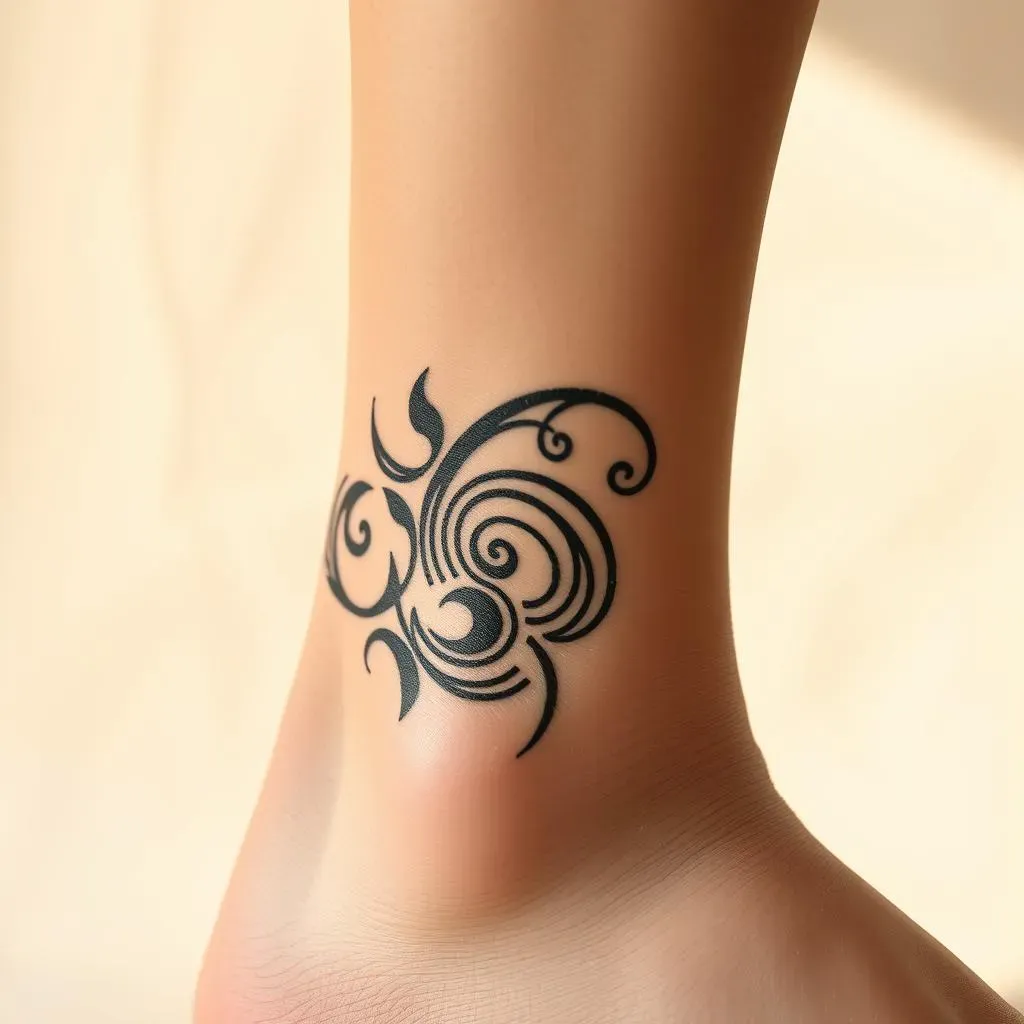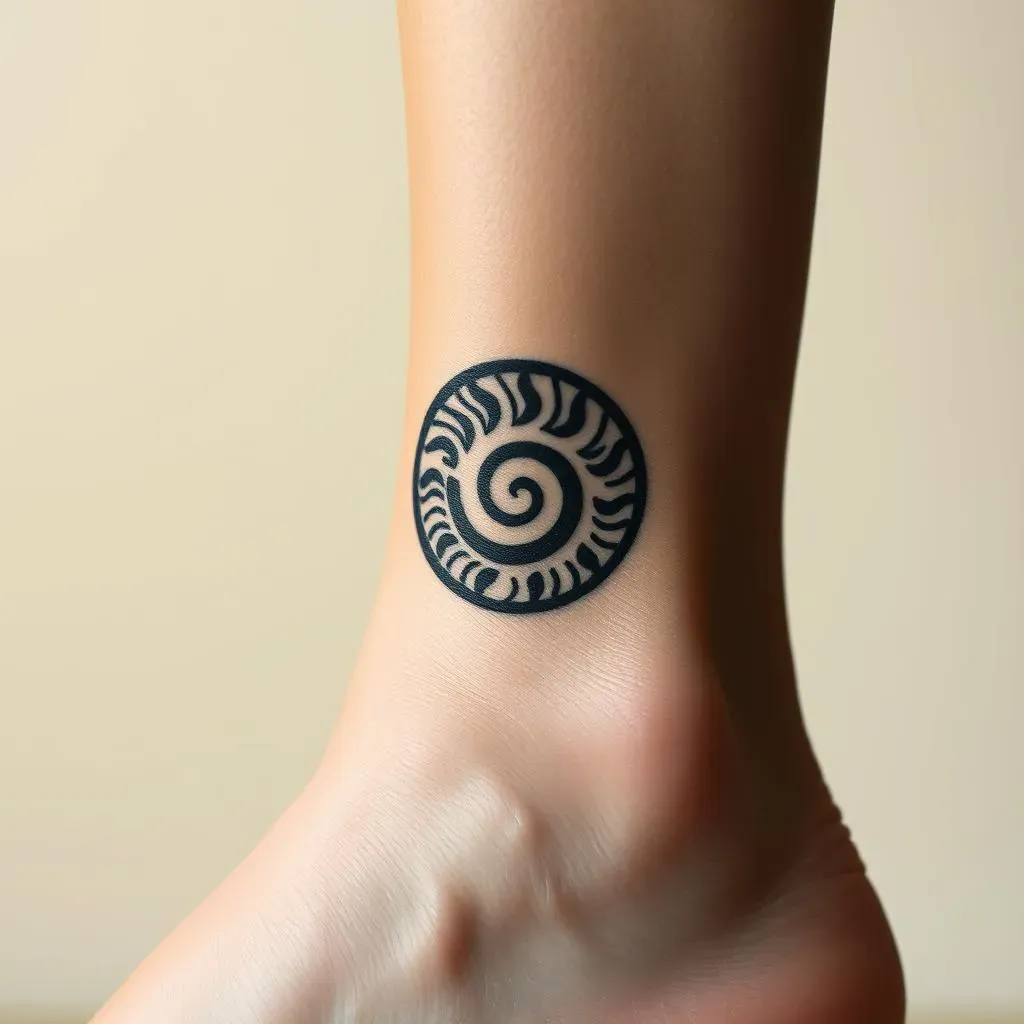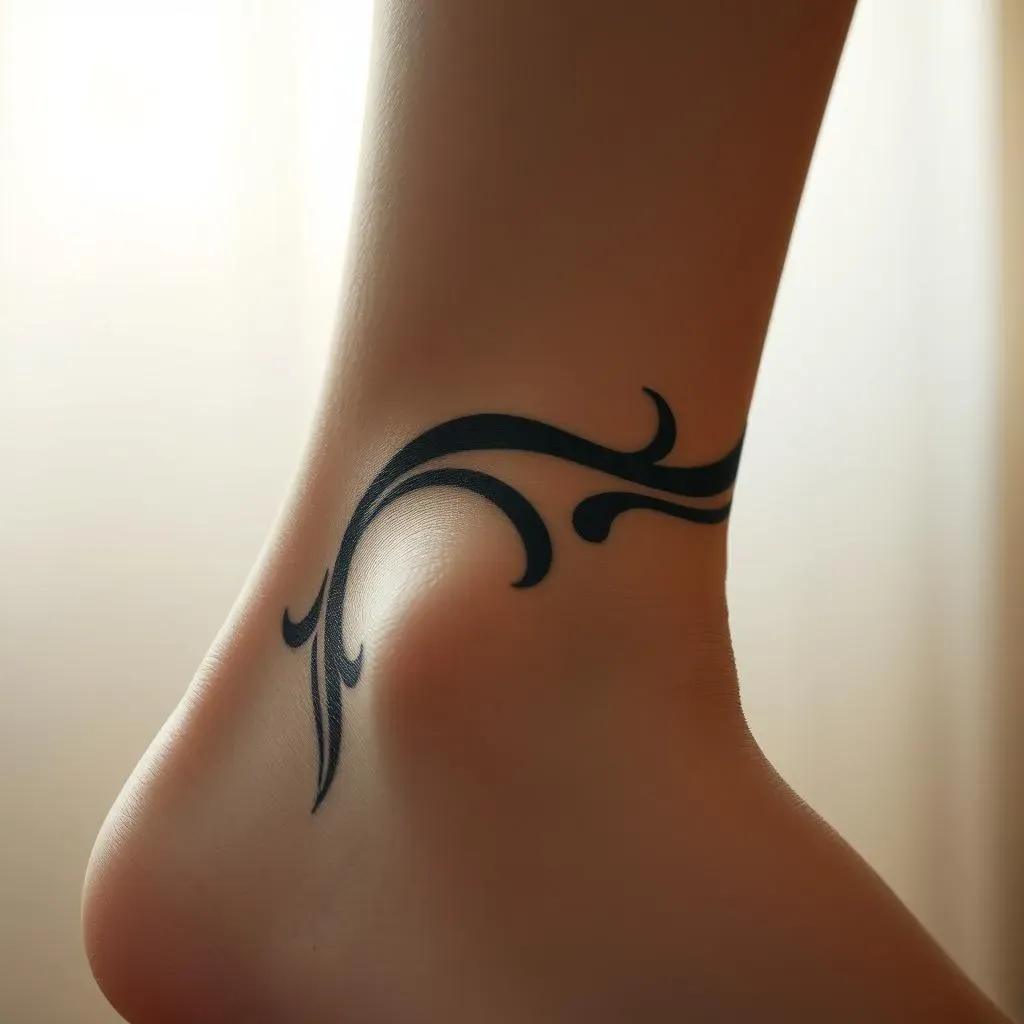Table of Contents
Ready to explore the captivating world of body art? This article is your guide to the intricate beauty and powerful symbolism of black and grey tribal ankle tattoos for women. We'll journey through a curated selection of designs, exploring the unique appeal of this style and how it can express your individuality. You'll discover the versatility of placement, learning how a carefully chosen design can enhance your personal style. We'll also delve into the practical aspects of aftercare, ensuring your stunning new tattoo remains vibrant and healthy for years to come. Get ready to be inspired and empowered as you discover the perfect black and grey tribal ankle tattoo to reflect your unique spirit. Prepare to be amazed by the artistry and find the design that speaks to your soul. Let's embark on this exciting exploration together!
Exploring the Allure of Black and Grey Tribal Ankle Tattoos for Women

Exploring the Allure of Black and Grey Tribal Ankle Tattoos for Women
The Timeless Appeal of Tribal Designs
Tribal tattoos hold a unique allure, steeped in history and cultural significance. Their intricate patterns and bold lines represent a connection to heritage and ancestry, offering a powerful way to express identity. The black and grey palette adds a sophisticated touch, allowing the details of the design to truly shine. Think of the elegant simplicity of a Maori-inspired design, or the fierce energy of a Polynesian pattern. These aren't just tattoos; they're wearable works of art that tell a story.
The ankle is a particularly captivating placement for these designs. It's a delicate spot that allows for both subtle and bold expressions. A smaller, more intricate design can add a touch of elegance, while a larger piece can make a striking statement. The ankle's location also allows for easy display or concealment, depending on the occasion and personal preference. This flexibility adds to the overall appeal of this type of tattoo.
Style | Characteristics | Suitable for |
|---|---|---|
Polynesian | Bold, geometric patterns; often incorporates symbolic elements. | Those who appreciate strong, meaningful designs. |
Maori | Intricate swirling patterns; often features curved lines and spirals. | Those who prefer elegant and detailed designs. |
Native American | Geometric shapes, animals, and spiritual symbols. | Those who value cultural heritage and symbolism. |
Subtlety and Strength: The Power of Black and Grey
Unlike vibrant color tattoos, black and grey work offers a unique visual impact. The absence of color allows the artist's skill to truly shine, highlighting the intricate details and shading that bring the design to life. This monochromatic palette creates a sense of depth and sophistication, making the tattoo feel both powerful and refined. Think of the subtle shading that can create the illusion of texture and movement, transforming a simple design into a masterpiece.
The beauty of black and grey tribal ankle tattoos lies in their ability to be both subtle and striking. They can be small and understated, adding a touch of personal flair without being overly flashy. Alternatively, they can be large and bold, making a powerful statement about the wearer's personality and style. The versatility of the style allows for a wide range of expressions, ensuring there's a perfect design for every woman.
- Emphasis on linework and shading
- Creates depth and dimension
- Allows for intricate detail
- Versatile style, suitable for various design preferences
Personal Expression and Cultural Respect
Choosing a black and grey tribal ankle tattoo is a deeply personal decision. It's about selecting a design that resonates with your individual style and values, reflecting your unique personality and experiences. Whether it's a symbol of strength, resilience, or spiritual connection, your tattoo becomes a powerful expression of self. It's a piece of art that tells your story, a visual representation of who you are.
It's crucial to approach tribal designs with respect and understanding. These aren't just aesthetic choices; they carry cultural significance and meaning. Research the origins and symbolism of the designs you're considering, ensuring you're making an informed and respectful choice. Working with a talented artist who understands and appreciates these cultural nuances is essential for creating a meaningful and authentic piece.
Design Ideas and Placement for Black and Grey Tribal Ankle Tattoos on Women

Design Ideas and Placement for Black and Grey Tribal Ankle Tattoos on Women
Exploring Diverse Tribal Motifs
The world of tribal designs is incredibly diverse, offering a wealth of inspiration for your ankle tattoo. From the bold geometric patterns of Polynesian tribal art to the intricate swirls of Maori designs, the possibilities are endless. Consider incorporating symbolic elements that resonate with your personal story or beliefs. A stylized animal, a meaningful symbol, or an abstract pattern can all be incorporated into a stunning black and grey tribal design. Remember, the best design will be one that speaks to you on a deeper level.
Think about the overall aesthetic you want to achieve. Do you prefer a minimalist design with clean lines and simple shapes, or something more intricate and detailed? The size and complexity of the design will also influence its placement on your ankle. A smaller, more delicate design might be perfect for the inner ankle, while a larger, more elaborate piece might suit the outer ankle or even wrap around.
Motif | Symbolic Meaning (Examples) | Style Suggestion |
|---|---|---|
Spirals | Growth, transformation, the cycle of life | Maori-inspired, flowing design |
Geometric Shapes | Balance, order, connection to the earth | Polynesian-inspired, bold and structured |
Animals | Strength, protection, spiritual guidance | Can be stylized or realistic, depending on preference |
Optimizing Placement for Your Ankle Tattoo
The placement of your tattoo significantly impacts its overall look and feel. The inner ankle offers a more delicate and subtle canvas, ideal for smaller, intricate designs that you might want to easily conceal. The outer ankle, on the other hand, provides more space for larger, bolder designs that can be easily showcased. Consider how much visibility you desire when making your decision. Do you want your tattoo to be a hidden treasure, or a statement piece that others can admire?
Think about your lifestyle and how the placement might affect the tattoo's longevity. Areas that experience more friction, such as the inner ankle, might require more careful aftercare to prevent fading or damage. Discuss your options with your tattoo artist; they can help you choose the best placement based on your individual preferences and lifestyle. Remember, the perfect spot will enhance your chosen design and reflect your personality.
- Inner Ankle: Discreet, suitable for smaller, intricate designs.
- Outer Ankle: More visible, ideal for larger, bolder designs.
- Around the Ankle Bone: Unique placement, requires careful consideration of design and aftercare.
- Back of the Ankle: Offers a less visible option, often chosen for personal designs.
Aftercare and Considerations for Black and Grey Tribal Ankle Tattoos for Women

Aftercare and Considerations for Black and Grey Tribal Ankle Tattoos for Women
Protecting Your New Tattoo: The First Few Weeks
The first few weeks are crucial for your tattoo's healing process. Keep the area clean and dry, following your artist's specific instructions. This usually involves gentle washing with unscented soap and water, patting it dry, and applying a thin layer of recommended aftercare ointment. Avoid scrubbing or picking at any scabs that may form; let them fall off naturally. Sun exposure is a major no-no during this time, so keep your ankle covered or use a high SPF sunscreen. Swimming pools and hot tubs should also be avoided initially, as they can introduce bacteria and irritate the healing skin.
Remember, patience is key. Your tattoo will go through different stages of healing, including some mild redness, swelling, and itching. These are normal, but if you experience excessive pain, swelling, or pus, contact your tattoo artist or doctor immediately. Following these simple guidelines will significantly increase the chances of your tattoo healing properly and retaining its vibrant appearance. A well-cared-for tattoo will look its best for much longer.
Day | Action | Important Note |
|---|---|---|
1-3 | Gentle washing with unscented soap and water; apply thin layer of aftercare ointment. | Avoid harsh scrubbing. |
4-7 | Continue washing and applying ointment; avoid sun exposure. | Keep the area clean and dry. |
7-14 | Reduce ointment application; focus on keeping the area moisturized. | Avoid tight clothing or friction. |
Long-Term Care: Maintaining Your Tattoo's Vibrancy
Even after your tattoo has fully healed, it still requires some ongoing care to maintain its vibrancy and prevent fading. Regular moisturizing with a high-quality lotion will help keep the skin hydrated and prevent dryness. This is especially important in drier climates or during the winter months. Avoid excessive sun exposure, always using a high SPF sunscreen when your tattoo will be exposed to the sun. This will help prevent fading and discoloration. Also, consider the clothing you wear; certain fabrics can cause friction and irritation. Choosing loose-fitting clothing, especially during the initial healing phase, will minimize the risk of damage.
Regular touch-ups might be needed over time, depending on your lifestyle and the quality of the initial work. This is especially true for black and grey tattoos, as they can be more prone to fading than colored tattoos. Consult your tattoo artist for recommendations on touch-ups and maintenance. They can assess the condition of your tattoo and advise on the best course of action. With proper care, your black and grey tribal ankle tattoo will remain a beautiful and lasting tribute to your individual style.
- Moisturize regularly with a high-quality lotion.
- Use a high SPF sunscreen to protect from sun damage.
- Avoid excessive friction from clothing or other sources.
- Consider touch-ups as needed to maintain vibrancy.
Addressing Potential Concerns and Complications
While most tattoos heal without complications, it's important to be aware of potential issues. Allergic reactions to the ink are rare but possible. If you experience unusual symptoms like severe itching, rash, or blistering, seek medical attention immediately. Infections are also a concern, particularly if proper aftercare is not followed. Signs of infection include increased pain, swelling, redness, and pus. If you notice any of these symptoms, see a doctor or your tattoo artist right away.
Remember, choosing a reputable and experienced tattoo artist is crucial. They'll not only create a stunning design but also provide you with clear and accurate aftercare instructions. They'll also be able to address any concerns you might have during the healing process. Don't hesitate to reach out to your artist with questions or if you notice anything unusual. Their expertise and guidance are invaluable in ensuring the successful healing of your tattoo. A little proactive care will go a long way in keeping your tattoo looking its best for years to come.